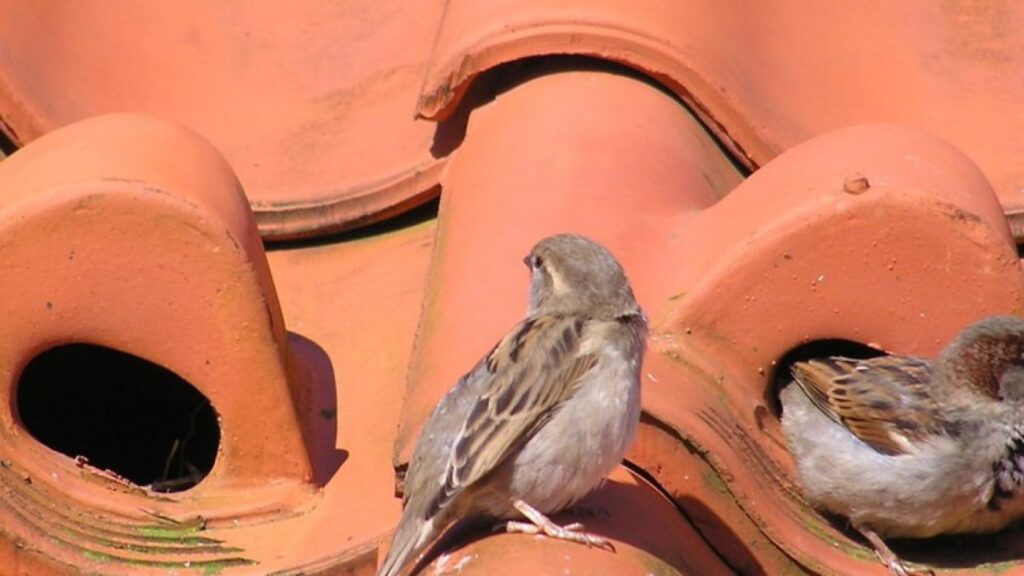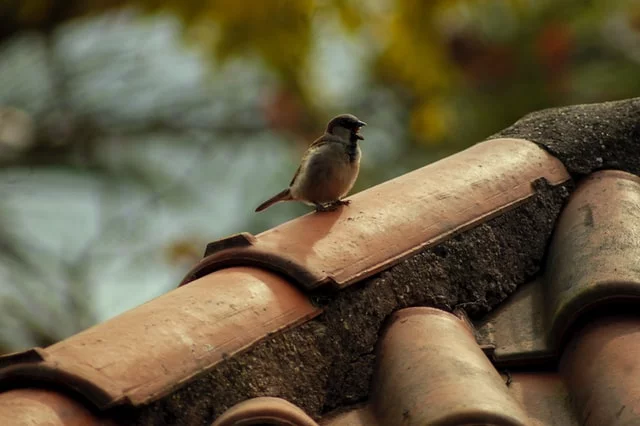Birds are often attracted to houses for various reasons. These can include the availability of food sources like bird feeders, insects, berries, or seeds in the garden. Additionally, houses might offer shelter, nesting opportunities, or protective spaces in trees, shrubs, or ledges. Seasonal migration plays a role, with birds stopping for rest and nourishment during their journeys. Access to water sources, such as ponds or birdbaths, can also draw birds.
In addition, urban environments might suit certain bird species, and bird-friendly landscaping, with specific plants or flowers, can make houses appealing. To attract birds intentionally, consider adding bird feeders, houses, or bird-friendly plants. Conversely, to reduce their presence, limiting food sources or altering landscaping may help.
How do various factors attract birds to homes?
Several factors can attract birds to homes. Birds are drawn to specific features in their environment that provide them with essential resources and favorable conditions. Here are some factors that attract birds to residential areas:
Food sources
Providing bird feeders with seeds, suet, mealworms, or nectar can attract a variety of bird species. Different birds have different dietary preferences, so offering a diverse selection of food can appeal to a wider range of species.
Water availability
Birds need water for drinking and bathing. Birdbaths, ponds, or even simple shallow containers of water can attract birds, especially during dry or hot weather.
Shelter and nesting sites

Trees, shrubs, birdhouses, and nesting boxes offer birds places to rest, seek shelter from predators, and build nests during the breeding season. Creating a diverse landscape with various vegetation provides different birds with suitable nesting spots.
Landscaping and habitat diversity
Birds are attracted to gardens and landscapes with a variety of plant species, including trees, bushes, flowers, and grasses. Different plants offer various food sources, shelter, and nesting opportunities for birds.
Protection from predators
Birds are more likely to frequent areas where they feel safe from predators. Providing dense vegetation, birdhouses with appropriate entrance hole sizes, and avoiding the use of pesticides that could harm birds can create safer environments.
Availability of insects and natural foraging areas: Insects, berries, fruits, and other natural food sources can attract insect-eating birds or fruit-eating species to residential areas.
Location and migration routes
Homes located along bird migration routes or near natural habitats like forests, wetlands, or bodies of water may naturally attract migrating birds looking for rest stops or foraging opportunities.
Seasonal considerations
Some birds are attracted to specific habitats or food sources during certain seasons. For instance, offering nesting materials during the breeding season or providing extra food in winter can draw birds to your home.
Bird-friendly practices
Implementing bird-friendly practices such as reducing glass reflections to prevent collisions, minimizing outdoor lighting at night to avoid disorientation, and keeping cats indoors to protect birds from predators can make an area more attractive to birds.
What observations reveal about bird attraction and behavior?
Observations of bird attraction and behavior can reveal a great deal about the preferences, habits, and needs of birds in specific environments. Here are some key observations that can provide insights into bird attraction and behavior:
Species Diversity
Noticing the variety of bird species that visit your area can indicate the attractiveness of the environment. A diverse range of species suggests that the habitat provides a mix of resources, including food, water, shelter, and nesting sites, catering to different bird preferences.
Feeding Behavior
Observing what birds eat and their feeding habits can offer insights into their dietary preferences. Some birds may prefer seeds from feeders, while others might feed on insects, fruits, or nectar. Monitoring feeding behavior can help tailor food offerings to attract specific bird species.
Social Interactions
Watching how birds interact with each other can provide information about their social behaviors, dominance hierarchies, mating rituals, and flock dynamics. Some species are highly social, while others are more solitary.
Nesting and Reproduction
Observing nesting behaviors, such as the construction of nests, incubation of eggs, and feeding of young, can provide valuable information about breeding seasons, nesting preferences, and nesting site requirements.
Daily and Seasonal Patterns
Monitoring the timing of bird visits throughout the day and across seasons can reveal patterns in their behavior. Some birds might be more active during specific times of the day or seasons, such as dawn or during migration periods.
Use of Habitat
Observing where birds prefer to forage, roost, and rest within your environment can indicate preferred habitats and shelter options. Understanding their habitat preferences can help in creating more attractive environments for them.
Response to Changes
Observing how birds respond to changes in the environment, such as the introduction of new feeders, landscaping modifications, or the presence of predators, can reveal their adaptability and sensitivity to alterations in their surroundings.
Territorial Behavior
Many bird species exhibit territorial behavior. Observing aggressive displays or certain calls can indicate territorial boundaries and the defense of resources.
Migration and Movement
Tracking migratory patterns and observing the movement of birds can offer insights into their seasonal movements, flight paths, and stopover locations.
What methods attract or deter birds intentionally?

There are various methods to intentionally attract or deter birds based on the specific goals you have for your property or environment.
Attracting Birds
Bird Feeders
Providing bird feeders with seeds, suet, mealworms, or nectar can attract different bird species. Use a variety of feeders to accommodate various feeding habits.
Water Sources
Installing birdbaths, ponds, or small water features can attract birds for drinking and bathing. Moving water or drippers can be particularly appealing.
Native Plants
Planting a diverse range of native trees, shrubs, flowers, and grasses provides natural food sources and shelter for birds. Different plant species attract different birds due to varied food sources and nesting opportunities.
Nesting Boxes/Birdhouses
Placing birdhouses or nesting boxes can attract birds seeking shelter or nesting sites. Ensure the design and placement of these structures match the needs of specific bird species.
Offer Nesting Materials
Providing materials like twigs, grass clippings, and nesting fluff can attract birds looking for materials to build nests.
Protect from Predators
Creating a safe environment by minimizing potential threats from predators can encourage birds to frequent the area. Use deterrents or safeguards to protect nesting sites.
Physical Barriers
Installing physical barriers like netting or mesh can prevent birds from accessing specific areas or structures where they are not wanted.
Visual Deterrents
Reflective objects, such as reflective tape, CDs, or shiny objects, can startle birds and discourage them from landing or nesting in certain areas. Scarecrows or decoy predators (like owls or hawks) may also deter birds.
Sound Deterrents
Devices that emit distress calls or predator sounds can discourage birds from settling in an area. However, these should be used thoughtfully to avoid causing distress to neighboring wildlife or pets.
Repellents
Certain non-toxic repellents, such as bird gels, sprays, or granules, can discourage birds from roosting or perching in specific locations. These should be used according to manufacturer instructions and reapplied as needed.
Adjusting Environment
Altering the environment by removing food sources, water, or shelter that attract birds can deter them. For example, regularly cleaning up spilled birdseed can discourage birds from gathering in an area.
Scents and Taste Deterrents
Some scents or tastes are unpleasant to birds. Using bird-safe deterrents with bitter or strong odors can discourage birds from landing or feeding in certain spots.
FAQ’s
Is it good to have birds around your house?
Having birds around your house is beneficial as they assist in pest control by eating insects, contribute to pollination, and bring joy with their presence and beautiful songs.
Are birds good luck?
In various cultures, birds are associated with good luck or positive omens, but beliefs about bird-related luck can vary significantly depending on cultural interpretations and traditions.
Should you cuddle your bird?
Cuddling a bird depends on the bird’s comfort level and individual personality; some birds may enjoy gentle interactions, while others may find it stressful or unpleasant.
What should you not do with birds?
Avoid exposing birds to harmful substances like tobacco smoke, strong fumes, or non-stick cookware. Additionally, never neglect their need for proper nutrition, space, and mental stimulation.
Is it OK to keep birds in your room?
It’s generally acceptable to keep birds in your room if the space is bird-friendly, well-ventilated, and free from potential hazards like drafts, toxic plants, or excessive noise.
Do birds get happy?
Birds exhibit behaviors that indicate contentment or satisfaction, such as singing, playing, and engaging in natural behaviors, although their emotions may not align directly with human happiness.
Final Words
Birds come to houses for different reasons, like finding food, safe places to nest, and resting during their travels. Observing their behavior can help understand what they like. To attract birds, set up feeders, birdhouses, and plants they enjoy.
However, if too many birds are around, you can limit food sources or change the house’s surroundings. Understanding how birds behave helps us share our space with them better.
